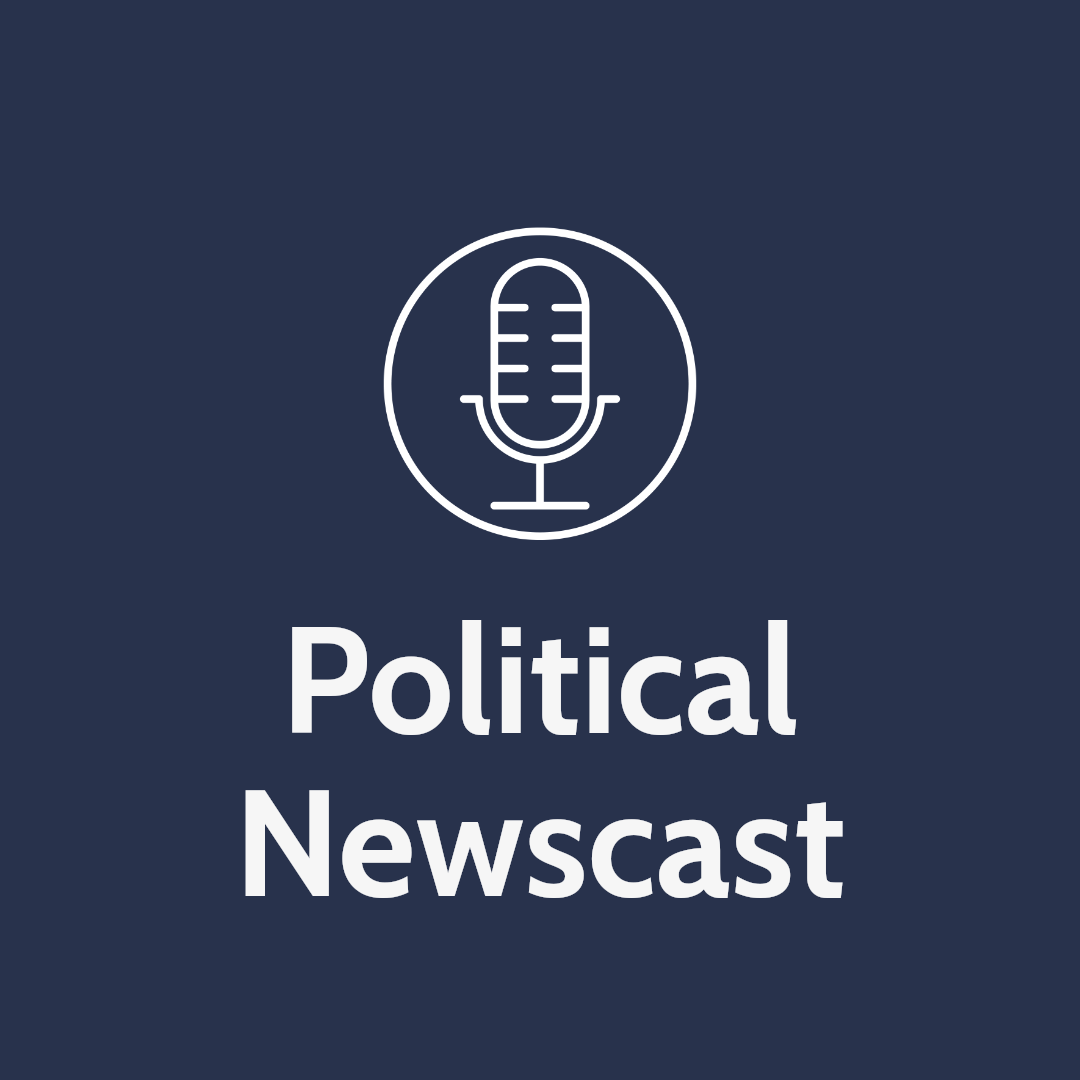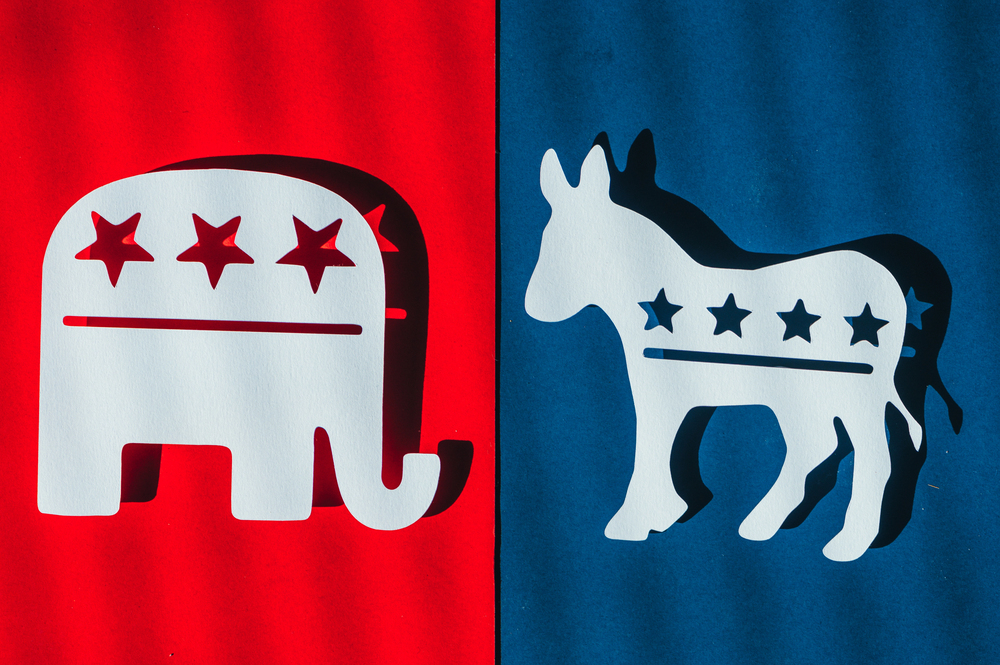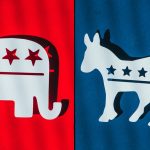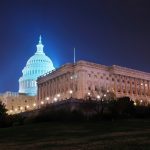Political parties are central to how the U.S. government functions. From shaping public opinion and funding campaigns to writing legislation and staffing key government positions, parties help organize the competing interests within American democracy. Yet for many voters, parties are seen only as red vs. blue. Understanding how these organizations shape policy and control political power provides a deeper look at how decisions get made in Washington and beyond.
This article explores how U.S. political parties function, how they influence governance, how they evolve, and why they remain so dominant in the American system.
The Role of Political Parties in a Representative Democracy
At its core, a political party is a group of individuals who organize to win elections, influence policy, and gain control of government. In the U.S., the two major parties — the Democratic Party and the Republican Party — have dominated the political landscape since the mid-1800s.
Political parties:
- Recruit and support candidates for public office
- Develop platforms that reflect their core values and goals
- Coordinate legislative activity in Congress
- Organize voter outreach and mobilization efforts
- Shape national and state-level policy agendas
While the Constitution does not mention political parties, they emerged early in American history and became essential to how elections and governance operate.
Parties also serve as a shortcut for voters. With hundreds of candidates on ballots during midterm or presidential elections, party labels give the public a basic idea of where a candidate stands on key issues. This simplifies decision-making in a complex electoral environment.
Party Platforms: Defining Principles and Policy Priorities
Each major party releases a platform during its national convention, outlining its positions on key issues. These documents act as both a messaging tool and a policy roadmap.
For example:
- The Republican platform may emphasize limited government, tax cuts, national defense, and traditional values.
- The Democratic platform may focus on expanded healthcare access, environmental regulation, labor rights, and social equality.
While platforms are not legally binding, they guide the priorities of candidates, influence legislative efforts, and signal what voters can expect from a party’s leadership.
These platforms are developed by party members, experts, and interest groups, and reflect months of negotiation. The process includes debates, platform hearings, and ultimately approval by delegates during the convention.
Over time, platforms reflect ideological shifts. For example, the Democratic Party once supported segregationist policies in the South, a stance it later abandoned. The Republican Party, historically associated with anti-slavery roots, evolved into a pro-business, conservative coalition by the mid-20th century.
Party Leadership and Organizational Structure
Each party has a national committee that oversees strategy, fundraising, and coordination across states. These include:
- Democratic National Committee (DNC)
- Republican National Committee (RNC)
Chairs of these committees manage day-to-day operations, media strategy, and national conventions. At the state level, each party maintains similar organizations to manage local elections, fundraising, and volunteer operations.
Within Congress, party leadership plays a critical role. The House and Senate each have:
- Majority and minority leaders who set the floor agenda
- Party whips who ensure members vote with party priorities
- Committee chairs who influence what bills receive hearings
Leadership roles are often based on seniority, fundraising capacity, and party loyalty. These leaders help marshal support for the party’s legislative priorities and maintain discipline during key votes.
The Speaker of the House, elected by the majority party, has wide control over the House legislative calendar, committee appointments, and procedural rules. In the Senate, the Majority Leader controls which bills come to the floor and when votes occur.
Party Caucuses in Congress
Beyond formal leadership, members of Congress organize into party caucuses. These are internal party meetings where strategy is coordinated, policy positions are debated, and unity is enforced.
- The House Democratic Caucus and Senate Democratic Caucus meet regularly to align legislative priorities.
- The House Republican Conference and Senate Republican Conference serve a similar function for the GOP.
Within each party, members also join ideological or issue-based subgroups. Some of the most influential include:
- The Congressional Progressive Caucus, which pushes for Medicare for All, climate action, and labor protections.
- The Blue Dog Coalition, composed of centrist Democrats who support fiscal moderation.
- The Republican Study Committee, a long-standing conservative group favoring tax reform and limited government.
- The House Freedom Caucus, known for aggressively conservative stances and a willingness to challenge party leadership.
These groups help lawmakers organize around shared interests and influence negotiations within their broader party.
How Parties Influence Elections
Winning elections is the core function of political parties. Parties recruit candidates, shape campaign messaging, and provide resources that individual candidates often lack.
The process begins long before Election Day:
- Parties identify promising candidates through local activists, donor networks, and scouting by political operatives.
- Candidate training includes instruction on media handling, debate preparation, voter outreach, and compliance with election law.
- National parties provide financial support, campaign staff, advertising buys, and voter data tools.
In presidential elections, parties run parallel national campaigns:
- They hold nominating conventions with media coverage, platform announcements, and keynote speeches.
- The party nominee gains access to party field offices, databases, and strategic assets.
- Parties coordinate national ad spending and campaign travel.
For down-ballot races, state and local party organizations recruit candidates for governorships, state legislatures, county commissions, and school boards. These races often serve as pipelines for future national leaders.
Voter mobilization efforts include:
- Voter registration drives
- Phone banking and canvassing
- Absentee ballot education
- Targeted outreach to key demographics
Get-out-the-vote (GOTV) operations intensify in the final weeks before an election and can determine outcomes in swing districts.
Policy Making: From Party Ideology to Public Law
Political parties are not just election machines — they also play a central role in converting political ideology into legislation. The majority party in Congress wields control over the legislative agenda, committee leadership, and the floor schedule.
Policy development begins with party-aligned think tanks, advocacy groups, and constituent feedback. Party platforms and campaign promises guide initial legislative priorities, which are then shaped into bills by congressional staff, committees, and leadership.
Once a bill is introduced:
- It is typically referred to a relevant committee for hearings, analysis, and amendment.
- Party leaders determine whether it advances to a floor vote based on strategic considerations.
- Whips gauge member support, and amendments are negotiated to secure votes.
In a unified government, where one party controls both chambers and the presidency, major policy changes are more likely. Examples include:
- The Affordable Care Act (2010), passed under Democratic control
- The Tax Cuts and Jobs Act (2017), passed under Republican control
In divided government, compromise becomes necessary but more difficult, often leading to gridlock, temporary funding bills, or executive action.
The Role of Political Parties in the Judiciary
Political parties extend their influence to the judiciary through judicial appointments. Presidents nominate judges, but Senate confirmation depends heavily on party alignment.
During unified government, confirmations are swift and often partisan. Judicial philosophies — originalism, textualism, or a living Constitution approach — are weighed during hearings. The goal is to install judges who interpret the law in line with the party’s long-term policy vision.
Beyond the Supreme Court, parties fill lower federal courts, which handle thousands of cases annually. These rulings shape national policy on:
- Immigration enforcement
- Environmental protection
- Religious freedom
- Executive power limits
Senate control determines the pace and outcome of confirmations. Blue slips, filibuster reforms, and committee rules have all been tools for partisan maneuvering.
State and Local Politics: A Party Power Base
While federal offices get national attention, parties thrive at the state and local level. Governors and state lawmakers influence education, infrastructure, taxation, and more.
Each state party has a unique structure, tailored to local demographics and issues. These organizations:
- Manage primary elections and delegate selection
- Coordinate ballot initiatives
- Build candidate pipelines for higher office
- Fundraise through local events, mailers, and small-dollar donations
Redistricting is one of the most important state-level powers. After each census, state legislatures redraw congressional districts. The party in power often draws lines favoring its candidates, a practice known as gerrymandering.
At the city and county level, party control shapes:
- Policing and public safety budgets
- Housing policy and zoning decisions
- Public school funding
- Local taxes and economic development plans
State parties also influence judicial and school board elections, often with little public scrutiny. These offices play a critical role in shaping long-term legal and educational policy.
Fundraising, Media, and Messaging Machines
Modern political parties operate as media and fundraising powerhouses. Campaign finance laws allow parties to raise vast sums through:
- Individual contributions
- Political action committees (PACs)
- Super PACs and outside groups
- Joint fundraising committees with candidates
Funds are used to:
- Produce advertising across TV, radio, digital, and print
- Hire polling firms and consultants
- Build databases of likely voters and donors
- Run legal teams for ballot challenges and recounts
Messaging is coordinated nationally through talking points, media surrogates, and party-aligned media outlets. Both parties maintain rapid-response teams that react to news cycles, frame issues, and mobilize supporters.
Social media teams craft viral content, coordinate hashtags, and respond to opponents. Email lists and SMS campaigns drive fundraising and event attendance.
Criticism, Challenges, and Reform Movements
Many Americans express frustration with the current party system, citing partisanship, gridlock, and a lack of viable alternatives. Common criticisms include:
- Excessive influence of major donors and special interests
- Primary elections that reward ideological extremes
- Closed party systems that marginalize independents
- Gerrymandered districts reducing electoral competition
Several reform efforts have been launched to address these concerns:
- Independent redistricting commissions have been adopted in states like California and Michigan
- Ranked-choice voting is in use in Maine and several cities to promote majority support
- Campaign finance reform proposals seek to curb the role of dark money
- Open primaries and nonpartisan blanket primaries aim to expand voter participation
Reformers argue that reducing party power could produce more responsive and moderate governance. However, entrenched party infrastructure, legal hurdles, and institutional inertia make change difficult.
Third Parties and Independents: Why They Struggle
Despite periodic interest in third parties, the U.S. system heavily favors a two-party structure. The Electoral College, winner-take-all voting, and ballot access laws create substantial obstacles.
Barriers include:
- Signature requirements for ballot access in each state
- Exclusion from televised debates
- Limited fundraising capability and donor networks
- Media bias favoring major party candidates
Notable third-party efforts include:
- Ross Perot’s 1992 campaign, which earned 19 percent of the vote
- Ralph Nader’s 2000 bid, blamed by some for tipping the race
- Libertarian and Green Party candidates, who routinely run but fail to gain traction
Some independents succeed at the state level, such as Senator Bernie Sanders (I-VT) or former Governor Jesse Ventura (MN), but they often caucus with a major party to gain committee assignments or legislative support.
Conclusion: Why Political Parties Still Matter
Despite widespread frustration with partisanship, political parties remain the primary vehicles for organizing political action in the United States. They provide structure, drive policy, and create accountability in a complex system. Understanding how parties operate — from fundraising and campaigning to legislating and appointing judges — is essential for anyone trying to understand how American politics really works.
Whether viewed as necessary organizing tools or as roadblocks to reform, parties continue to shape the balance of power at every level of government. As long as they control access to the ballot, the debate stage, and the levers of legislative authority, they will remain central to the American political system.






[…] represents the deliberate manipulation of electoral district boundaries to create political advantages for specific parties or groups. This practice employs strategic techniques like cracking and […]